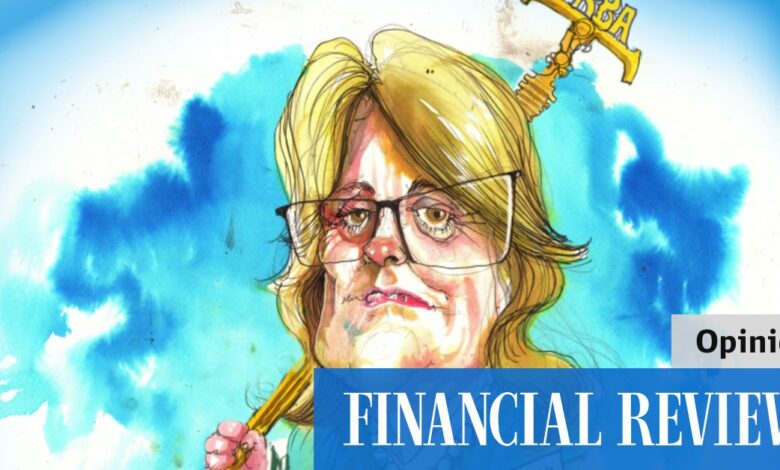Australian investors must ask one big question about the RBA

Bullock wasn’t biting on Tuesday afternoon when asked for her view on local traders’ views on rate cuts; currently one-and-a-bit 0.25 per cent cuts are priced in before the end of the year.
“The jump in relation to various bits of news, they jump in relation to various bits of commentary. I suspect they’ll be jumping as I’m speaking today.”
Overall, her second-ever post-decision press conference was another masterclass in saying 25 different ways that inflation has not yet been tamed, policy is restrictive at present, and the central bank is unsure when rates will move, or which way they will move.
“What the board is basically saying is that we are uncertain, we don’t know, and we can’t rule [anything] in or out,” Bullock said.
Sweet relief
That leaves the way open for the usual guessing game to begin. Dovish market economists continue to see a need for the RBA to cut in August or September, as the central bank’s primary concern flips from taming inflation to supporting a weakening economy.
The hawks believe a cut in February 2025 is more likely, arguing strong house prices, a strong labour market and sticky core inflation (particularly services inflation) will give the RBA little room to move as soon as investors might hope. Those in the middle predict a cut in September or November.
But with hikes now effectively off the table, and the next move in rates likely to be down, perhaps it’s worth thinking about the next question investors should be asking themselves when it comes to the RBA.
How will the economy adjust to a prolonged period of relatively higher rates?
If we zoom out and look at where rates might head over the next two years, most economists predict a series of cuts – probably five or six – that take the cash rate down to about 3.1 per cent by the end of 2025.
Clearly, that will be sweet relief for big parts of the economy. But it’s also worth noting that even a 3 per cent interest rate would be much higher than Australia has known in the past decade. The cash rate fell below 3 per cent in May 2013, and stayed below 3 per cent until December 2022.
Yes, interest rates will fall. But we are not going back to the days of very low interest rates that became the rule, not the exception, for households and businesses over the decade.
How the economy fares under those conditions is a fascinating question to consider. It looms a small example of what BlackRock’s chief strategist Wei Li calls the new regime: higher inflation, higher rates, more volatility and more prospect of central banks struggling to tweak the dials between fighting inflation and bolstering growth.





